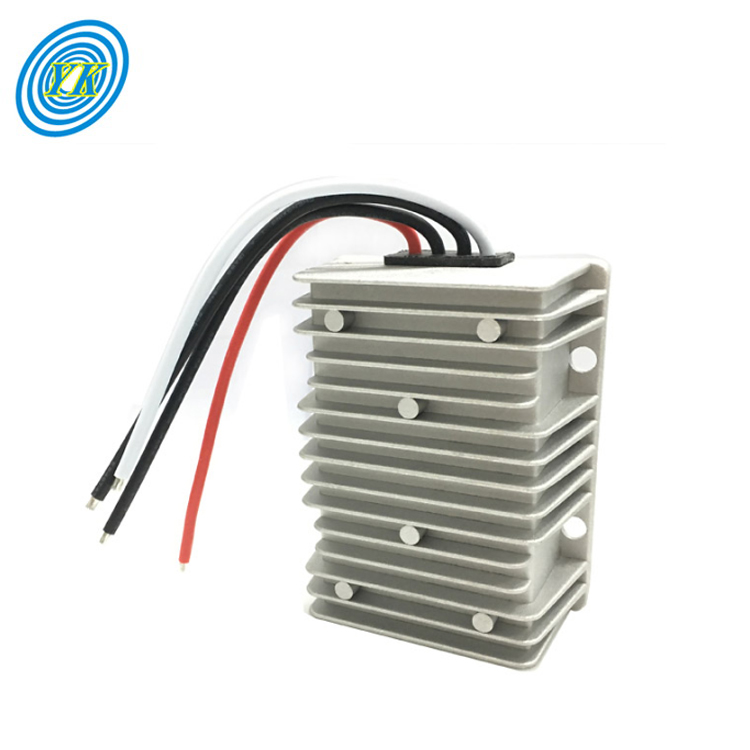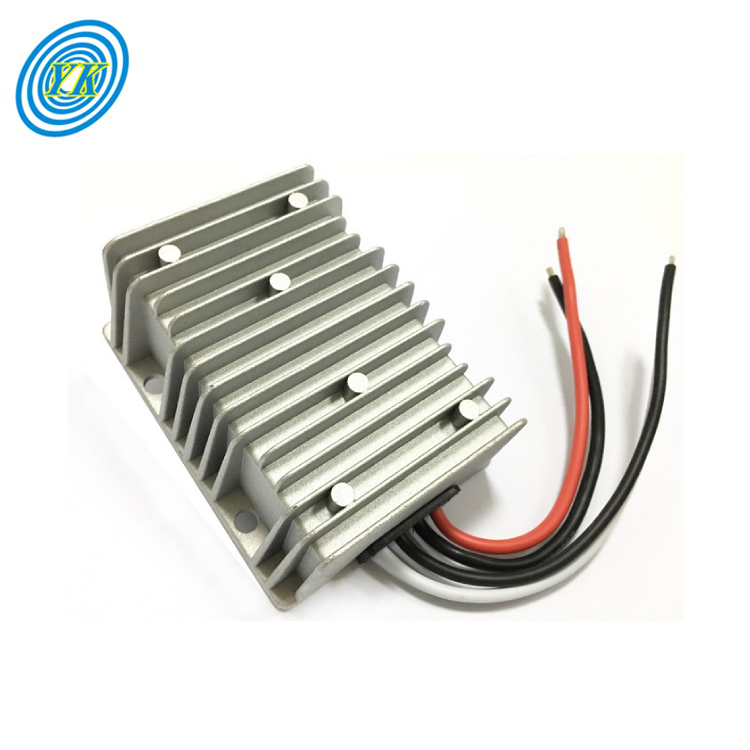News
Mastering Buck/Boost DC-DC Converters: From Fundamentals to Advanced Applications
Click: 680 Date: 03/18/2024 10::44::57 AM
Mastering Buck/Boost DC-DC Converters: From Fundamentals to Advanced Applications
Understanding the Basics: Buck and Boost Converters
Buck and Boost converters are pivotal components in power electronics, offering a flexible solution for voltage regulation by either stepping up or stepping down the input voltage to meet the demands of the load. These converters are essential in a variety of applications, including managing voltage levels in battery-operated devices for optimal performance, regulating power in renewable energy systems like solar panels and wind turbines, and ensuring voltage stability in automotive electronics for electric and hybrid vehicles.
The fundamental operation of a Buck and Boost converter involves two distinct modes: Buck mode, where the output voltage is lower than the input, and Boost mode, where the output voltage is higher. The converter switches between these modes to control the output voltage as required. Key components include an inductor, a diode, a switch (typically a transistor), and a capacitor. The switch alternates between the two modes, while the inductor and capacitor store energy during each mode, ensuring a smooth output voltage.
Buck and Boost converters offer several advantages, such as versatility, high efficiency (up to 95% or higher), and compact size due to the use of smaller components at higher switching frequencies. However, they also come with challenges, including increased complexity in design and operation, and the potential for generating electromagnetic interference (EMI) and noise at high frequencies.
Designing an efficient Buck and Boost converter requires careful consideration of factors like input and output voltage levels, load current, switching frequency, and component selection. For instance, a higher switching frequency allows for the use of smaller inductors and capacitors, reducing the overall size of the converter. Yet, higher frequencies may also increase switching losses, affecting the converter’s efficiency. Component selection is crucial for determining the converter’s performance, with the choice of inductor, capacitor, diode, and switch based on their voltage and current ratings to ensure reliable operation.
In conclusion, Buck and Boost converters play a vital role in various power conversion applications by offering the flexibility to adjust voltage levels as required. Their versatile nature, high efficiency, and compact design make them an attractive solution for a wide range of industries, including consumer electronics, renewable energy systems, and automotive applications. However, it is essential to carefully consider the design aspects, component selection, and potential trade-offs to ensure optimal performance and reliability.
In the realm of Buck and Boost converters, the core components that drive the conversion process are semiconductors, energy storage elements, and filters. These elements play pivotal roles in the operation of these converters, enabling them to efficiently transform voltages from one level to another.
Semiconductors: At the heart of Buck and Boost converters are semiconductor devices, such as diodes and transistors. These components are crucial for the switching mechanism that controls the flow of current and energy storage. In modern Buck converters, a second transistor is often used instead of a diode for synchronous rectification, enhancing efficiency and reducing power loss.
Energy Storage Elements: Inductors and capacitors are the primary energy storage elements in Buck and Boost converters. The inductor stores energy during the on-state of the converter, while the capacitor discharges this energy to the output load during the off-state. This energy transfer process is fundamental to the operation of these converters, allowing for the regulation of output voltage levels.
Filters: To reduce voltage ripple and ensure a smooth output voltage, filters are employed. These filters, typically consisting of capacitors and inductors, are placed at the input and output ends of the converter. They help in stabilizing the output voltage by smoothing out the fluctuations caused by the switching process.
The interplay between these components is what enables Buck and Boost converters to perform their voltage conversion tasks with high efficiency. The semiconductors control the switching process, the energy storage elements facilitate the energy transfer between the input and output, and the filters ensure a stable output voltage. Together, they form the backbone of these converters, making them indispensable in a wide range of applications, from powering LEDs and electric vehicles to enhancing battery life in portable devices.
To enhance the performance of Buck and Boost converters, particularly in reducing voltage ripple and improving efficiency, several strategies can be employed. These strategies not only focus on the selection of appropriate components but also on the design and implementation of effective filtering mechanisms.
Reducing Voltage Ripple in Flyback Converters: Flyback converters, known for their isolation between input and output, can experience significant voltage ripple, especially in high-power output systems. One method to mitigate this issue is by adding an additional output stage of LC (Inductor-Capacitor) filtering circuit. This approach significantly reduces output ripple by leveraging the inductor and capacitor to smooth out the voltage fluctuations. For instance, a Flyback converter operating at 5V with an 8A load and an input of 200V can benefit from a second-stage LC filter, which can greatly reduce the output voltage ripple without the need for parallel capacitors.
Optimizing Inductor and IC Matching for Buck Converters: The efficiency and power loss in Buck converters are significantly influenced by the MOSFETs and the inductor. To achieve the highest efficiency, it's crucial to ensure that the switching elements and inductors are state-of-the-art, coupled with high-performance components. The best match between an inductor and an IC is paramount for achieving optimal performance in terms of PCB space, thermal efficiency, and cost-efficiency. This involves selecting an inductor that matches the DC resistance of the MOSFETs, ensuring that the conduction losses from the MOSFETs are minimized and that the DC power losses are optimized .
Minimizing Power Losses in Buck Converters: The efficiency of a Buck converter can be significantly improved by minimizing power losses. This involves selecting the right inductor and MOSFETs that have low on-resistance and high saturation current. The diameter of the enameled copper wire in the inductor coil, which forms the core of the inductor, plays a crucial role in determining the DC resistance, DC loss, and the inductor's rated current. Choosing a good compromise between the package size and rated current is essential for a successful Buck converter design, aiming for a temperature rise of 20°C to 30°C for average operating conditions .
Improving Efficiency through Component Selection: The selection of suitable components, including the right inductor and MOSFETs, is critical for achieving high efficiency in Buck converters. The DC resistance of the inductor should match the ratio of the MOSFETs’ RDS(ON) to minimize losses and achieve an efficient compromise between size, performance, and cost. Modern buck converters and inductors are available with DC and conduction resistances in the tens of mΩ range, allowing for an optimal match that helps achieve outstanding performance .
Addressing Saturation Current and Inductance: The saturation current (ISAT) and inductance (L) of the inductor are critical parameters in the design of Buck converters. The saturation current should exceed the peak current to ensure efficient operation. The inductance, calculated based on the duty cycle, output voltage, switching frequency, and ripple current, plays a significant role in determining the converter's efficiency. Starting with a 30% to 40% ripple current is a common practice, leading to a nominal inductance that can be calculated using specific equations .
In summary, optimizing the performance of Buck and Boost converters involves a combination of strategic component selection, effective filtering mechanisms, and careful consideration of design parameters such as saturation current and inductance. By implementing these strategies, it's possible to significantly reduce voltage ripple and improve the overall efficiency of these converters.
Buck and Boost converters play a pivotal role in the modern electronics landscape, serving as the backbone of power management in a wide array of devices. Their ability to efficiently convert and regulate voltage makes them indispensable in various applications, from everyday consumer electronics to cutting-edge technologies.
Illuminating the Future: Powering LEDs - In the realm of lighting, Buck and Boost converters enable the use of LEDs in a more versatile manner. By stepping down voltage for low-power applications or stepping up voltage for high-brightness LEDs, these converters ensure that LEDs can be used in a wide range of lighting fixtures, from small, portable devices to large, high-intensity lighting systems. This versatility not only enhances the energy efficiency of LED lighting but also opens up new design possibilities for lighting solutions.
Propelling Electric Vehicles: The Role of Converters - In the electric vehicle (EV) industry, Buck and Boost converters are crucial for managing the complex power requirements of electric motors. These converters enable the efficient conversion of battery voltage to the voltage required by the motor, ensuring optimal performance and efficiency. Moreover, they facilitate the integration of various power sources, such as solar panels or wind turbines, into EVs, contributing to the development of sustainable and flexible energy solutions for transportation.
Revitalizing Battery Life: Enhancing Portable Devices - For portable devices, Buck and Boost converters play a critical role in extending battery life. By efficiently managing the voltage supplied to the device's components, these converters reduce power consumption, allowing for longer battery life. This is particularly important in the era of smartphones and wearable technology, where battery efficiency is a key selling point. The use of these converters in portable devices not only improves user experience by extending battery life but also contributes to the overall energy efficiency of the device.
In summary, Buck and Boost converters are integral to the advancement of modern electronics, enabling the development of more efficient, versatile, and sustainable power solutions across a wide range of applications. Their role in powering LEDs, electric vehicles, and enhancing battery life in portable devices underscores their significance in the field of electronics and beyond.

